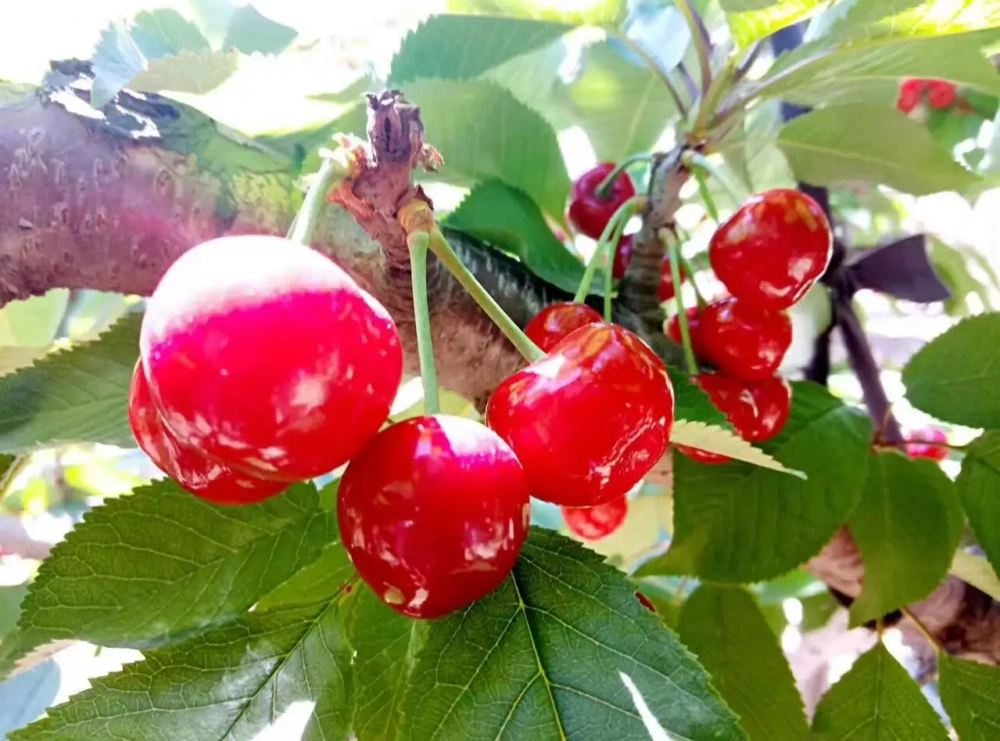Region Map of Ludian County in Zhaotong
Location Map of Ludian County in Zhaotong
Chinese Name: 鲁甸县崇文阁
English Name: Chongwen Pavillion in Ludian County, Zhaotong
Chongwen Pavilion is a prominent cultural and historical landmark located in the new urban area of Ludian County. Covering a land area of 9 acres with a building space of 1,167.5 square meters, the pavilion features a variety of structures, including a main hall dedicated to Confucius, exhibition rooms, recreational rooms, and offices for the local literary federation, totaling 11 rooms. The site also includes traditional Chinese architectural elements such as long corridors, archways, a garden, a pond, and small bridges, creating an elegant and dignified atmosphere.
Cultural and Historical Significance
- Historical Roots: The original Chongwen Pavilion was established in 1777 during the 42nd year of Emperor Qianlong’s reign, highlighting Ludian’s long-standing tradition of valuing education and culture. The pavilion was initially located at the base of what is now called Wenping Mountain, giving the county the historical name “Chongwen Town.” Though the original structure was eventually destroyed, five ancient cedar trees still stand as reminders of its legacy.
- Purpose and Cultural Role: Chongwen Pavilion serves as a sacred place dedicated to venerating Confucian sages, similar to the Confucian Temple in Qufu, Shandong. It stands as a symbol of traditional Chinese Confucian values, emphasizing the importance of education, cultural refinement, and moral integrity.
Reconstruction and Development
- Reconstruction Efforts: The modern reconstruction of Chongwen Pavilion began in June 2005, expanding the site to over 20 acres. The complex now includes multiple architectural elements such as Chongwen stone steps, Chongwen archway, Pan Pool, Zhuangyuan Bridge, Ruyuan, First Teacher Hall, Zhonghe Hall, Xuewen Hall, Minglun Hall, Ink Wash Studio, Scholar’s Pavilion, Honoring Teacher Archway, and a viewing platform.
- Symbolic Location: Situated on Wolong Mountain’s dragon-head-shaped peak, Chongwen Pavilion symbolizes a strategic priority of education in the region, as its elevation is even higher than that of the government office building.
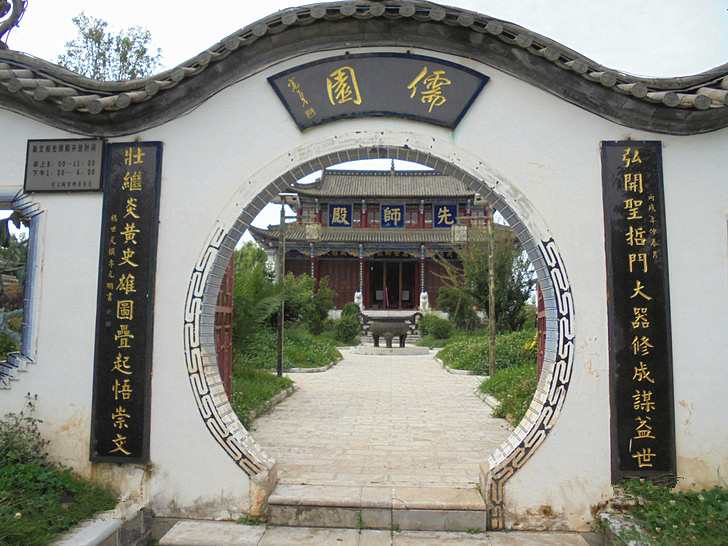
Architectural and Scenic Features
- Key Architectural Elements:
- Chongwen Stone Steps and Archway: Leading up to the pavilion, these features emphasize the importance of knowledge and cultural heritage.
- Pan Pool and Zhuangyuan Bridge: A lotus-shaped pool symbolizes the continuous pursuit of knowledge, with the Zhuangyuan Bridge historically crossed by scholars before taking their exams.
- Gardens and Pavilions: The pavilion complex includes three main courtyards, with the central courtyard named Ruyuan. The design features decorative walls with plum, orchid, and bamboo motifs, evoking a sense of serenity. The central area also houses the First Teacher Hall and additional side chambers.
- Scholar’s Pavilion and Ink Wash Studio: Located on either side of Ruyuan, these structures each have a main hall and side chambers, reflecting traditional Chinese architecture and serving as spaces for contemplation and cultural activities.
- Nine-Bend Corridor and Viewing Platform: The corridor leads to a viewing platform, offering panoramic views of Ludian County, including both old and new districts, Century Avenue, and various urban landmarks, blending ancient charm with modern development.
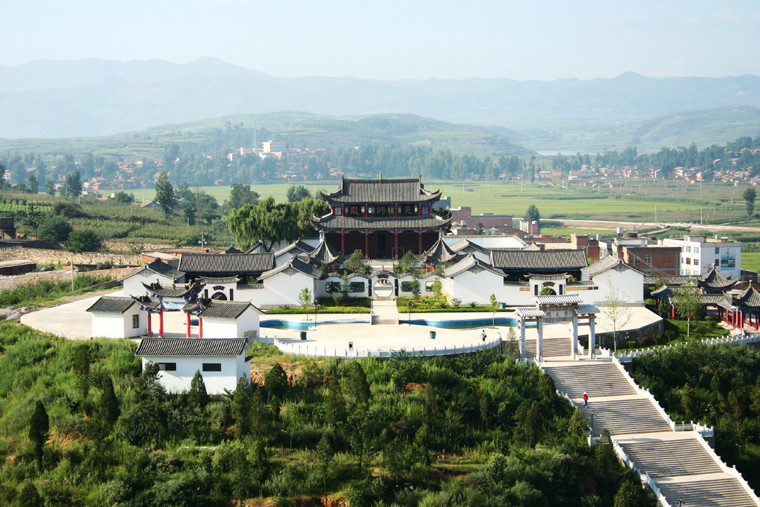
Significance and Community Impact
Chongwen Pavilion is more than just a historical site; it is a symbol of cultural pride and educational importance in Ludian County. By embodying traditional Confucian values, the pavilion encourages unity, cultural appreciation, and a commitment to education among all ethnic groups in the area. It serves as an inspiring reminder of the rich heritage and bright future of Ludian County, fostering a love for the homeland and a desire to build a prosperous and harmonious community.
Chinese Name: 鲁甸县太阳湖
English Name: Sun Lake in Ludian County, Zhaotong
Location and Layout:
Sun Lake is situated in the southern suburbs of Ludian County, bordered to the east by the Qiaowei Highway and to the west by the Minglou Natural Village. It covers an area of 320 acres. The overall layout of the park comprises four main components: the lake’s water surface, small islands, the lake road, and the commercial area.
Features:
- Shape and Size: Sun Lake is butterfly-shaped and located in the center of a flat plain on the city’s outskirts. The water surface covers 160,000 square meters, with a depth of 2.2 meters.
- Islands: The lake features three islands, each equipped with Jiangnan-style garden facilities such as octagonal pavilions and long corridors. Arch-shaped bridges connect the islands, creating a picturesque landscape with islands surrounded by water.
- Surroundings: The lake is encircled by a landscaped greenbelt with garden features. At the junction with Century Avenue, there is a fountain and a rock waterfall, designed to evoke a charming Jiangnan (Southern China) scenery with lush willows, abundant water mist, and fragrant flowers.

Cultural Significance:
The name “Sun Lake” originates from the Yi ethnic group’s worship of fire and sun totems, reflecting deep ethnic cultural significance.
Seasonal Beauty:
Sun Lake offers beautiful scenery throughout the year, with picturesque views such as:
- “Morning views of the red sunrise and evening reflections of the glowing clouds.”
- “Moonlight spilling silver on half the lake and lights casting reflections in the autumn pond.”
The lake is a popular destination for relaxation and recreation, providing a perfect setting for visitors to enjoy its scenic beauty.
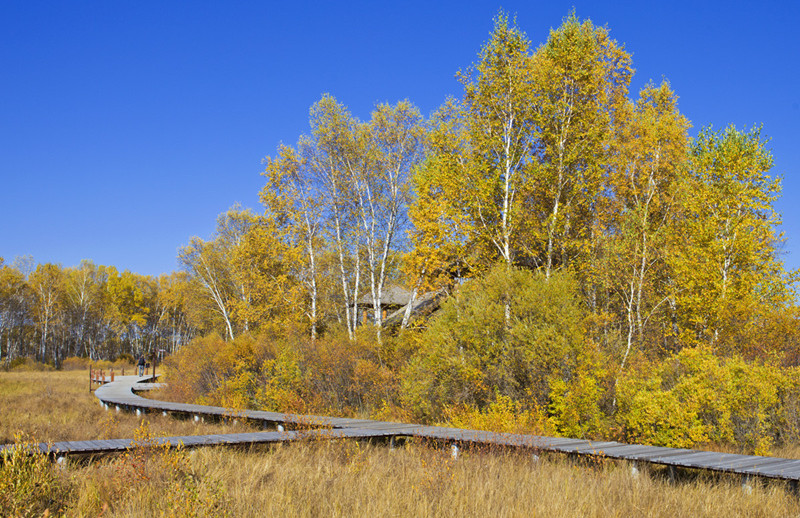
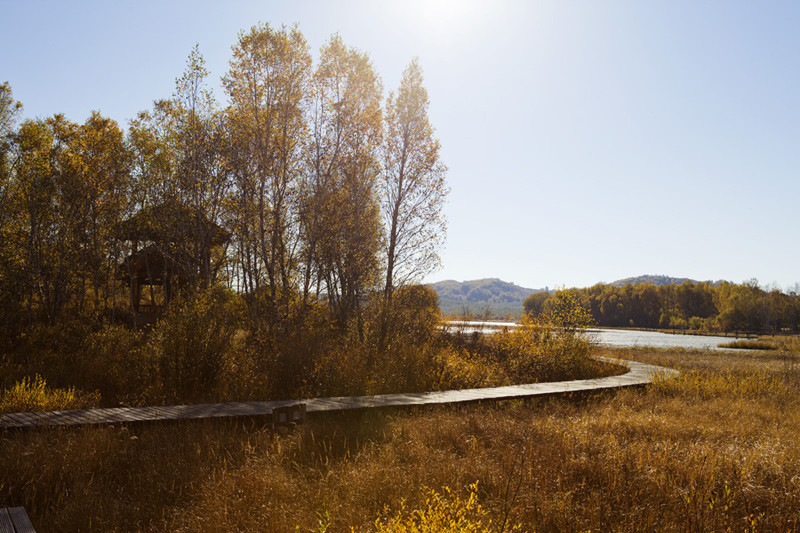
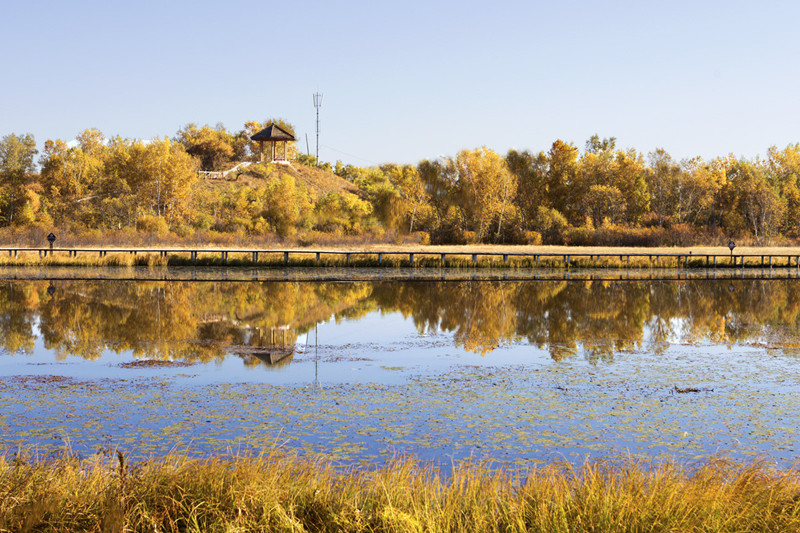
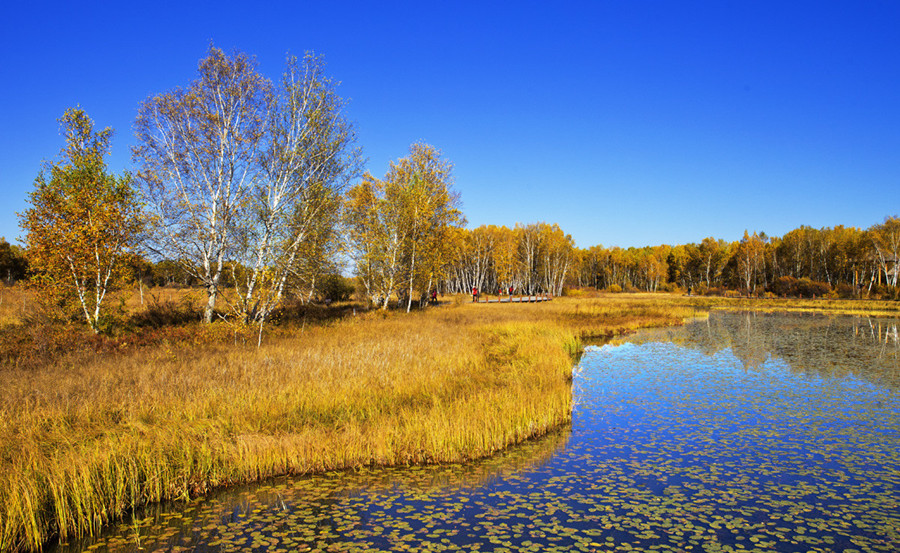
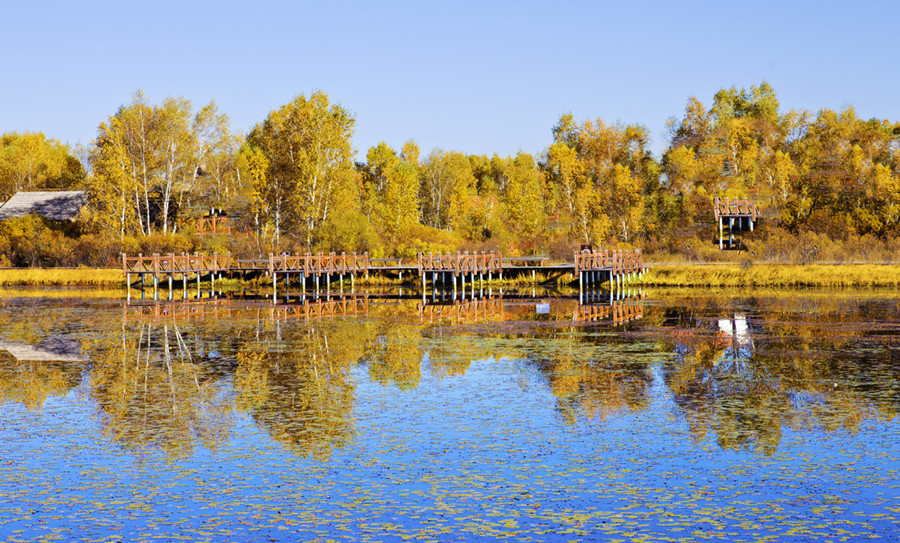
Chinese Name: 鲁甸县砚池山水库
English Name: Yanchishan Reservoir in Ludian County, Zhaotong
Overview
Yanchishan Reservoir is a small-scale reservoir primarily serving agricultural irrigation, with additional functions in flood control and providing drinking water. It is situated 2.5 kilometers south of Ludian County, on the upper reaches of the Zhaolu River’s tributary, the Tuzhusi River. The reservoir was initially built in 1956 and underwent significant upgrades between 2008 and 2009. The central budget project, with an investment of 7.77 million yuan, focused on reinforcing the dam, addressing seepage, and upgrading water conveyance and spillway systems.
Key functions of the reservoir include:
- Flood protection for 90,000 urban and rural residents.
- Irrigation for 150,000 acres of farmland.
- Providing drinking water for 48,000 people and 23,000 livestock.
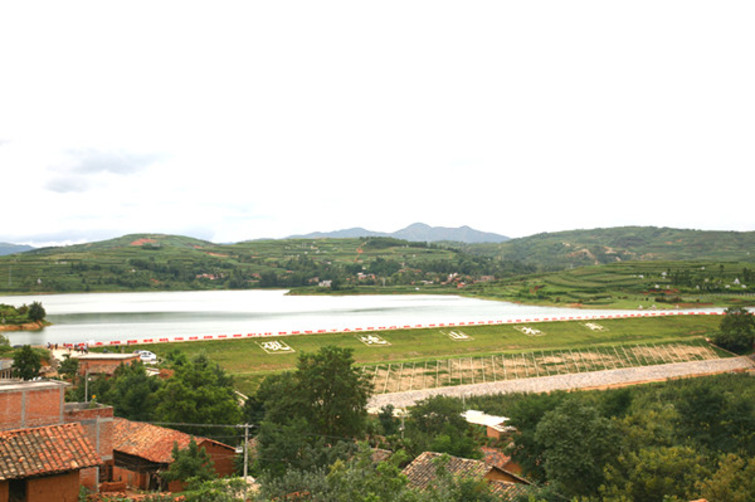
Ecological and Social Impact
Ecological Benefits:
- Red-Billed Gulls: Every winter, Yanchishan Reservoir attracts hundreds of red-billed gulls, enhancing the area’s natural beauty. The presence of these gulls indicates a healthy water environment and is a testament to the improved ecological conditions in Ludian County.
- Environmental Management: The county has made significant strides in ecological protection, improving water quality in rivers, lakes, and reservoirs. These efforts have led to increased wildlife and bird species, demonstrating the effectiveness of local environmental initiatives.
Social Benefits:
- The reservoir’s upgraded infrastructure not only restored its irrigation and flood control functions but also addressed the drinking water needs of the local population and livestock.
- Local initiatives encourage public participation in caring for the gulls, including responsible feeding practices and creating a suitable habitat for these birds.
Overall, Yanchishan Reservoir represents a successful integration of infrastructure development and ecological management, contributing to both practical benefits and enhanced natural landscapes.
Chinese Name: 昭通鲁甸县马厂新石器
English Name: Machang Neolithic Site in Ludian County, Zhaotong
Location: Machang Neolithic Site is located in Hulukou Village, Ciyuan Township, 5 kilometers east of Ludian County town, Zhaotong.
Site Description: The Machang Neolithic Site covers an area of over 100,000 square meters. It is situated near mountains and water, with the cultural layers primarily located on the eastern, southern, and western edges of a hill, close to the water.
The cultural layers at the site are up to 1.3 meters thick in the western section, and are divided into two layers: the upper layer is reddish-brown, while the lower layer is dark gray. Both layers contain red burnt clay fragments, charcoal, and pottery shards. Over 500 pottery pieces have been unearthed, with the majority being gray pottery, while the rest are sand-tempered gray pottery and black pottery. Identifiable vessel types include bowls, single-handled jars, flat-bottomed bottles, spouted bottles, single-handled bottles, closed-mouthed jars, long-necked small-mouth small-bottomed pots, and barrel-shaped, flat-bellied round-bottomed vessels. Some artifacts are covered with black pottery glaze, which is unique among Neolithic artifacts found in Yunnan.
Stone tools found at the site include knives and axes, made from hard stone with finely polished surfaces and advanced perforation techniques.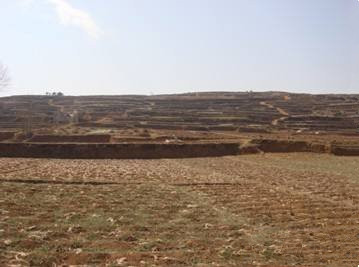
How to Get There
To visit the Machang Neolithic Site in Ludian County, Zhaotong:
- By Air: The nearest airport is Zhaotong Airport. From the airport, you can take a taxi or arrange private transportation to Ludian County.
- By Train: You can take a train to Zhaotong Railway Station. From there, you can take a taxi or local bus to Ludian County.
- By Bus: Regular bus services run from major cities in Yunnan to Ludian County. Upon arriving at the Ludian County bus station, you can take a taxi or local transportation to Hulukou Village.
- By Car: If driving, follow the G5611 expressway to Ludian County. Once in Ludian, follow local signs to Ciyuan Township and then to Hulukou Village.
Chinese Name: 昭通鲁甸县野石新石器
English Name: Yeshi Village Neolithic Site in Ludian County, Zhaotong
Overview of the Yeshi Village Neolithic Site
The Yeshi Village Neolithic Site is located about 5 kilometers east of Ludian County in the Taoyuan Township, Puzhilu Village, Yeshi Community. The site covers an area of approximately 1 square kilometer, with artifacts concentrated along both sides of a small river at the entrance of the present-day Yeshi Village. The cultural layer at the site is about 1.3 meters thick and includes finds such as red sandy pottery, polished black pottery, and gray pottery. The site also features ancient burial sites and semi-subterranean house foundations.
Approximately 200 square meters of the site exhibits grayish-white soil interspersed with a large number of pottery fragments. The Yeshi Village site is one of the larger and better-preserved Neolithic sites discovered in Yunnan, making it of significant research value. It was designated as a provincial key cultural relic protection unit in December 1987.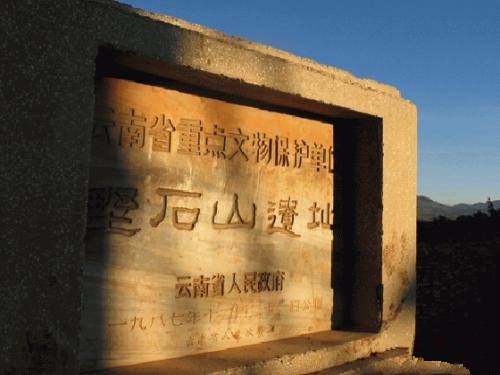
How to Get There
- Location: Yeshi Village Neolithic Site is located in Puzhilu Village, Taoyuan Township, about 5 kilometers east of Ludian County.
- Transportation: From Ludian County, you can take a taxi or drive to Taoyuan Township. Follow local signage to Puzhilu Village and continue to Yeshi Community. Using GPS or a map will help ensure accurate navigation.
Chinese Name:鲁甸县野石山遗址
English Name: The Relics of Yeshishan Mountain in Ludian County, Zhaotong
Yeshishan Site, Ludian County
The Yeshishan Site is located in Yeshicun, Taoyuan Township, Ludian County, Yunnan Province, and dates back to between 1300 BC and 900 BC. This site, situated in Puzhilu Village of Taoyuan Township, was discovered during a cultural relics survey in 1982. The site covers an area of 52,500 square meters and is bordered by Caohai Lake to the east. Artifacts unearthed from the Yeshishan Site include pottery items such as single-handle pots, jars, long-necked spouted fragments, and large earthen jar pieces. The pottery materials include polished black pottery, gray pottery, sand-tempered gray pottery, and red pottery. The name of the site, “Puzhilu,” means “place where ancestors or ‘Pu’ people lived” in the Yi language, making it a valuable location for research into Yi ethnic history. It has been designated as a provincial-level key cultural relic protection site.
Overview of the Site
The Yeshishan Site is located in Yeshicun, Taoyuan Township, Ludian County, Yunnan Province, covering an area of about 1 square kilometer. Archaeological excavations were conducted from April to June 2002, covering an excavation area of 425 square meters.
Archaeological Findings
The excavation uncovered one pottery kiln, two ash pits, along with traces of fire pits, shallow trenches, and a few post holes. Over 300 relatively complete pottery artifacts and a large number of pottery fragments were unearthed, along with several stone and a few bronze artifacts. The pottery items include jars, basins, bowls, pots, bottles, cups, ewers, lids, spindle whorls, and long-necked spouted vessels. Stone tools found include adzes, axes, arrowheads, spindle whorls, and double-hole knives, while bronze items include awls and adzes. The site dates back to between 1300 BC and 900 BC.
Significance and Value
The Yeshishan Site represents a relatively independent stage in the development of Bronze Age culture in northeastern Yunnan and northwestern Guizhou.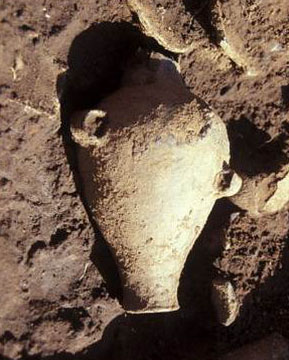
Exploration
Overview of the Exploration Process
On March 1, 2010, Longteng Exploration Company from Shaanxi Province dispatched a team of nine archaeologists to Ludian to conduct a detailed archaeological survey of the Yeshishan Site. Based on the natural topography of Yeshishan, the stratigraphic deposits were roughly divided into three areas: west, central, and east. The exploration began on March 1, 2010, and fieldwork concluded on March 28. By April 1, the team transitioned to compiling indoor reports and producing drawings. The exploration covered an area of 54,000 square meters, revealing 84 different types of relics, including 35 house foundations, 21 ash pits, 11 areas of ash deposits, 3 ash ditches, 1 dried-up well, 1 tomb, and 12 living pits.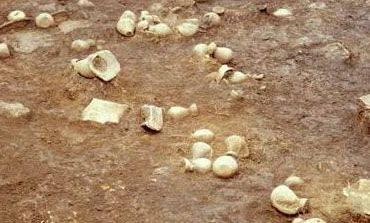
Exploration Results
The results of the exploration revealed that Yeshishan is home to a large area of ancient cultural relics. The cultural deposits are relatively thick, rich in content, clearly structured, and well-preserved. The extensive distribution of ash deposits is concentrated, thick, and rich in relics, containing a large amount of plant ash and pottery fragments. The discovered house foundations are all semi-subterranean structures, densely distributed with distinct patterns. The various types of relics identified during the exploration provide important materials and evidence for cultural research in this region. Additionally, these findings are of great significance for studying the historical development, evolution, and cultural trends of northeastern Yunnan and northwestern Guizhou.
Introduction
The Ludian Xiaozhai Cherry Culture Tourism Festival (鲁甸小寨樱桃文化旅游节) was founded in 2006. After years of dedication, the festival has become a stunning emblem of the city’s pastoral ecological leisure tourism. The brand image of “Ludian Cherry” and “Xiaozhai Cherry” (鲁甸樱桃) has gained recognition beyond the borders of Ludian.
Ludian County and Its Famous Xiaozhai Cherries
Ludian County (鲁甸县), located in the northeastern part of Yunnan Province, is renowned for its unique cherries, particularly the Xiaozhai cherry. With a cultivation history of over 300 years, Xiaozhai cherries boast an annual production of more than 300,000 kilograms. The cherry blossoms are white with a faint red hue, and the fruit resembles a pear-like shape. The cherries are red, juicy, with plenty of flesh, small stones, and a sweet flavor. These cherries are well-loved in regions such as Zhaotong, Kunming, Sichuan, and other parts of China.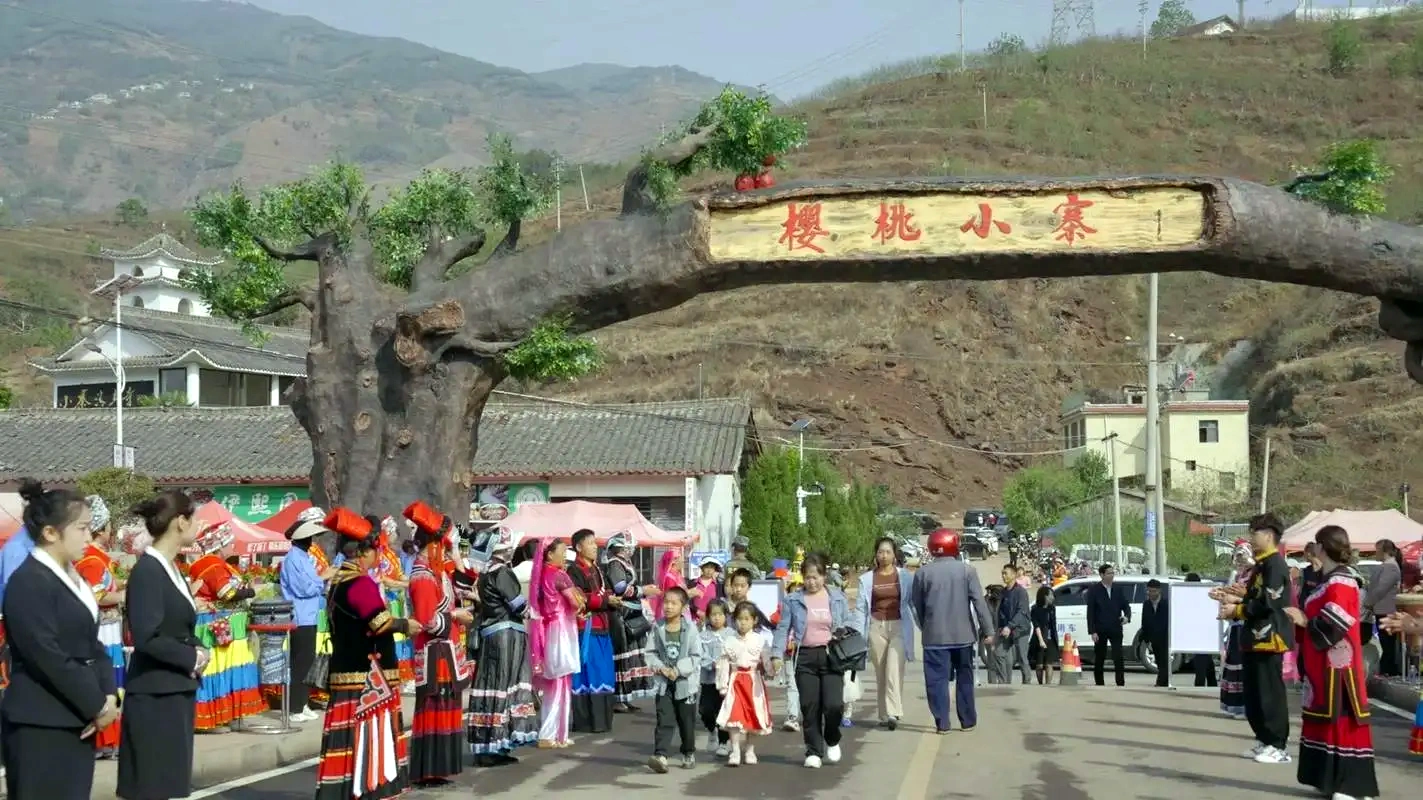
From mid-April to May each year, the river valley banks of Xiaozhai (小寨乡) are filled with vibrant red cherries. Visitors can not only enjoy the picturesque cherry-filled scenery but also explore the cherry gardens themselves. During the rainy season, Xiaozhai’s cherries ripen, becoming round, red, and shiny. The taste is a delightful balance of sweet and sour, making it an irresistible fruit both in appearance and flavor.
The Significance of Cherries
In their natural state, cherries are considered the first fruits to bring deliciousness to the world, earning the title of “the first branch of fresh fruit in the world” (天下鲜果第一枝). The appeal of cherries lies not only in their taste but also in their aesthetic beauty and nutritional richness. Scientific studies have shown that cherries are beneficial for enhancing beauty, making them particularly popular among women. Cherries mature earlier than most fruits, offering an early taste of the harvest and contributing to overall health.
Throughout history, cherries have been celebrated by countless scholars in poems and paintings. During the cherry ripening season, folklore traditions involve celebrating the cherry festival with offerings to the gods. People dress in colorful attire, singing and dancing to mark the occasion. Visiting the cherry forests provides an opportunity to taste fresh fruit and enjoy the beautiful scenery, creating a lively and vibrant atmosphere.
Festival Origin
The Cherry Culture Tourism Festival serves as a way for Ludian to preserve ancient traditions while embracing modern developments. Xiaozhai has established a 10-kilometer cherry corridor along the river, a 10-kilometer vegetable corridor, and a 10-kilometer green ornamental corridor.
The inaugural Cherry Culture Tourism Festival is held annually in Ludian, attracting nearly 10,000 tourists who come to pick cherries. The County Cultural Square hosts a grand literary show titled “The Feast of Spring,” featuring performances by famous singers such as Jiang Dawei (蒋大为), Yang Hongji (杨洪基), and Li Danyang (李丹阳). Since its inception, the annual festival has drawn large crowds to Ludian for fresh fruit, local snacks, and an authentic farmer culture experience. Xiaozhai Cherry has become the most distinctive and influential cultural tourism and industrial symbol of Ludian.
Purpose of the Festival
The Cherry Culture Tourism Festival is organized to showcase Ludian’s positive momentum in economic and social development, the vibrant spirit of all ethnic groups, and the unique charm of the cherry culture tourism industry. The festival aims to create a “Cultural Ludian” and promote the prosperity and development of Ludian’s tourism industry. During the festival, various activities such as “Ludian under the Lens” and “Red Cherry Carnival Night” (红樱桃狂欢夜) are held to celebrate the local culture and engage visitors.
Translated By Baima Quzong/白玛曲宗












Travel to Yunnan to experience the Muslim heritage of China. What’s more, you can enjoy the alluring scenery of Yunnan Province. Our Muslim tours will take you to the cities where Islam originated. By touring the famous mosques, you will learn about the history of Islam in China, dating back to the Yuan Dynasty.
Highlights:
- Visit Chinese mosques and understand the Muslim culture and history in Yunnan, China.
- Enjoy beautiful scenery on the way to visit mosques.
- Have a wonderful stay in Spring City and stroll along the Green Lake.
Brief Itinerary
- Day 1: Kunming Arrival
- Day 2: Kunming-Huize
- Day 3: Huize-zhaotong
- Day 4: Zhaotong
- Day 5: Zhaotong-Kunming
- Day 6: Kunming Departure
Google Map
Detailed Itinerary
Day 1 Arrive in Kunming
Sightseeing and Activities: Arrive in Kunming, the Green Lake
Accommodation: Kunming
Meals: None

Welcome to Kunming, the Spring City of China! Upon arrival at Kunming airport/train station, your local tour guide and driver will meet you at the arrival hall and escort you to your hotel. You will begin your journey to the diverse and captivating Yunnan province from the capital city, Kunming.
After a short rest, enjoy a stroll in Kunming’s most picturesque park, the Green Lake Park. This charming area features tea houses and small boutiques selling handicrafts and beautiful local paintings. You can also share in the joy of locals practicing tai chi, performing opera, and engaging in other vibrant activities. If you visit the park in November or December, you’ll see a large flock of red-beaked seagulls that migrate from Siberia.
Day 2 Kunming-Huize
Sightseeing and Activities: Da Hai Cao Shan Scenic Area, Huize Mosque
Accommodation: Huize
Meals: Breakfast and lunch
After breakfast, drive about 3.5 hours (211 km) to Huize County, Qujing. After lunch, visit the Da Hai Cao Shan Scenic Area (about 1.5 hours) and pay a visit for about 90 minutes. Afterward, head back to Huize County and visit Huize Mosque.
Day 3 Huize-Zhaotong
Sightseeing and Activities: Yulu Geosuture, Zhaotong Baxian Mosque, Zhaoyang Old Town
Accommodation: Zhaotong
Meals: Breakfast and lunch
After breakfast, drive to Yulu Geosuture (Yulu Dadifeng) to admire the magnificent natural formations. After lunch in Huize, drive to Zhaotong (about 2 hours). Visit the Baxian Grand Mosque, which was built in 1730. Then, explore Zhaoyang Old Town, which has a history of over 200 years.
Day 4 Zhaotong
Sightseeing and Activities: Dashanbao Scenic Area, Jigong Mountain, Ludian Tuogu Mosque
Accommodation: Zhaotong
Meals: Breakfast and lunch

In the morning, drive to Dashanbao Scenic Area (1.5 hours), 79 km from downtown Zhaotong. It is the winter habitat for black-necked cranes. The scenery of Jigong Mountain, particularly the sea of clouds, is a must-see for tourists. Continue to Ludian County to visit Tuogu Mosque. With its unique architectural style, Tuogu Mosque is a first-class mosque in Yunnan, renowned for its building techniques and scientifically sound structure.
After your visit, return to Zhaotong City.
Day 5 Zhaotong-Kunming
Sightseeing and Activities: Nancheng Mosque
Accommodation: Kunming
Meals: Breakfast and lunch
Drive back to Kunming after breakfast. Upon arrival, visit Nancheng Mosque, the largest mosque in Kunming. It was originally constructed during the Tang Dynasty and later renovated during the Qing Dynasty. The mosque’s design reflects the style of Chinese temples due to Buddhist cultural influences.
Day 6 Departure from Kunming
Sightseeing and Activities: Departure from Kunming
Accommodation: None
Meals: Breakfast
Enjoy some leisure time before heading to the airport for your departure flight.
Recommended Hotels
| Destination | 5 Star | 4 Star | 4 Star | Hostels |
| Kunming | ||||
| Huize | ||||
| Zhaotong |
Service Included:
- Admission fees for all of the sightseeing spots listed in the itinerary;
- Meals as listed in the itinerary;
- Hotels as listed in the itinerary;
- Private English-speaking tour guide;
- Private vehicle for transfers & sightseeing with skilled driver;
- Service charge & government taxes;
- Luggage transfers between airports and hotels;
- Domestic train tickets of soft sleeper.
Service Excluded:
- Any arrival and departure international airfares or train tickets;
- Chinese visa fees;
- Excess baggage charged by Airlines;
- Single room supplement;
- Tips to guides and drivers;
- Personal expenses and gratuities to service staff;
- Personal travel accident insurance;
- All optional programs.
Chongwen Pavillion in Ludian County, Zhaotong
Chinese Name: 鲁甸县崇文阁 English Name: Chongwen Pavillion in Ludian County, Zhaotong Chongwen Pavilion is a prominent cultural and historical landmark located in the new urban area of Ludian County....
Sun Lake in Ludian County, Zhaotong
Chinese Name: 鲁甸县太阳湖 English Name: Sun Lake in Ludian County, Zhaotong Location and Layout: Sun Lake is situated in the southern suburbs of Ludian County, bordered to the east...
Yanchishan Reservoir in Ludian County, Zhaotong
Chinese Name: 鲁甸县砚池山水库 English Name: Yanchishan Reservoir in Ludian County, Zhaotong Overview Yanchishan Reservoir is a small-scale reservoir primarily serving agricultural irrigation, with additional functions in flood control and...
Machang Neolithic Site in Ludian County, Zhaotong
Chinese Name: 昭通鲁甸县马厂新石器 English Name: Machang Neolithic Site in Ludian County, Zhaotong Location: Machang Neolithic Site is located in Hulukou Village, Ciyuan Township, 5 kilometers east of Ludian County...
Yeshi Village Neolithic Site in Ludian County, Zhaotong
Chinese Name: 昭通鲁甸县野石新石器 English Name: Yeshi Village Neolithic Site in Ludian County, Zhaotong Overview of the Yeshi Village Neolithic Site The Yeshi Village Neolithic Site is located about 5...
The Relics of Yeshishan Mountain in Ludian County, Zhaotong
Chinese Name:鲁甸县野石山遗址 English Name: The Relics of Yeshishan Mountain in Ludian County, Zhaotong Yeshishan Site, Ludian County The Yeshishan Site is located in Yeshicun, Taoyuan Township, Ludian County, Yunnan...
Longtoushan Mosque in Ludian County, Zhaotong
Introduction Chinese Name: 桃源龙头山清真寺 English Name: Longtoushan Mosque in Ludian County Xiaoyuan Longtoushan Mosque(桃源龙头山清真寺) is one of the ancient mosques in Yunnan Province, initially constructed in the 11th year...
Xiaozhai Cherry Culture Festival in Ludian County, Zhaotong
The Ludian Xiaozhai Cherry Culture Tourism Festival (鲁甸小寨樱桃文化旅游节) was founded in 2006. After years of dedication, the festival has become a stunning emblem of the city’s pastoral ecological leisure...
Tips Before Travel
Bring copies of your passport
Don't assume you're restricted to the main hubs of Beijing and Shanghai, our tours can start from any city.
Register with your embassy
For your safety, please register with the Embassy.
Always have local cash
Exchange some local currency for your trip
Our Team
Customize a Trip
Start planning your tailor-made holiday to China by contacting one of our specialists. Once enquired, you’ll get a response within 0.5~23.5 hours.
